#stresemannstrasse
Photo
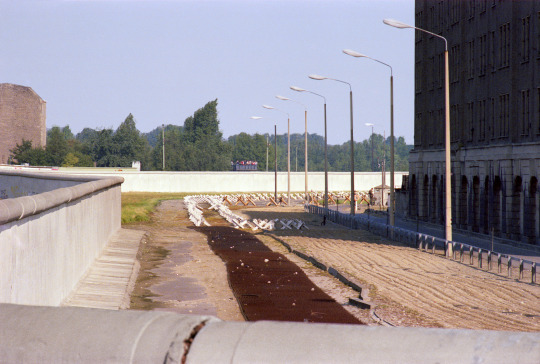
Berlin !981. "That men do not learn very much from the lessons of history is the most important of all the lessons of history."
Aldous Huxley
99 notes
·
View notes
Photo
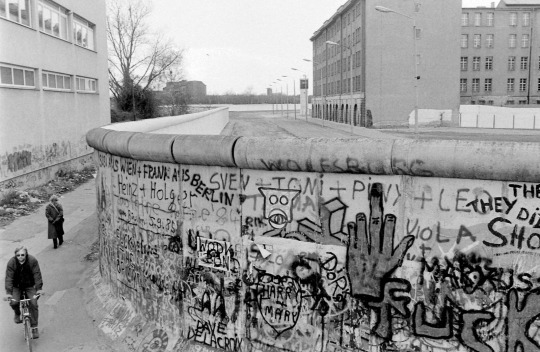
Berlin Wall from the west side at the corner of Niederkirchnerstrasse and Stresemannstrasse, 1988. From the Budapest Municipal Photography Company archive.
97 notes
·
View notes
Text
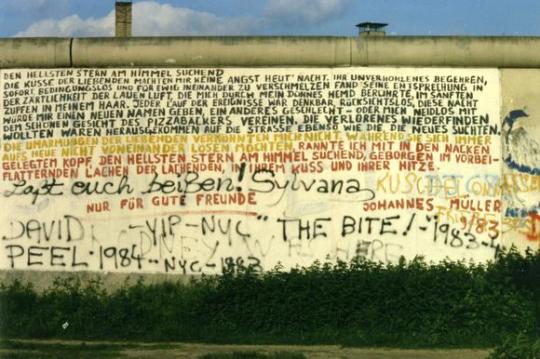
https://www.wir-waren-so-frei.de/index.php/Detail/Object/Show/object_id/2373
"Den hellsten Stern am Himmel suchend
die Küsse der Liebenden machten mir keine Angst heut' Nacht ihr unverhohlenes Begehren, sofort, bedingungslos und für ewig ineinander zu verschmelzen fand seine Entsprechung in der Zärtlichkeit der lauen Luft, die mich durch mein dünnes Hemd berührte, im sanften zupfen in meinem Haar. Jeder Lauf der Ereignisse war denkbar rücksichtslos.
Diese Nacht würde mir einen neuen Namen geben, ein anderes Geschlecht - oder mich neidlos mit dem schönen Gesicht des Pizzabäckers vereinen. Die verlorenes wiederfinden wollten waren herausgekommen auf die Straße ebenso wie die, die neues suchten. Die Umarmungen der Liebenden verhöhnten mich nicht während sie sich immer aufs Neue nicht voneinander lösen mochten, rannte ich mit in den Nacken gelegtem Kopf den hellsten Stern am Himmel suchend, geborgen im vorbei- flatternden Lachen der Lachenden, in ihrem Kuss und ihrer Hitze."
#berliner mauer#berlin#berlin wall#poesie#kunst#stresemannstrasse#mauerspruch#berlin west#geschichte#mauerpoesie#deutsch#Deutschland#geteiltes Berlin#der himmel über berlin#so wunderwunderschön#fav#liebe#Menschen#irgendwie... nächte in berlin oder berauschende nächte allgemein#stadtleben#wir waren so frei#mauer
0 notes
Text
Everything Could Always be Different: Women of IBA 1984/87
The International Building Exhibition 1984/87 was an architectural exhibition and an urban planning concept adopted by the Senate of Berlin in 1979, to rebuild and redevelop the residential blocks of West Berlin city center. It consisted of two parts: new urban construction – IBA Neubau, led by Josef Paul Kleihues, and urban renewal – IBA Altbau, led by Hardt-Waltherr Hämer. The exhibition aimed to solve the specific urban problems of the inner-city blocks through a careful, cooperative and participatory approach that should engage all social groups. Women were sidelined in this process, as architects and planners and as members of target communities. However, they demanded a seat at the IBA table – and made a lasting difference.

A Female reportage photographer surveys Berlin (c. 1910) | Photo via German History in Documents and Images
The issue of women’s participation in IBA arose at the beginning of the 1980s. Numerous experts were invited by IBA to a public hearing, where they shared their opinion on various social issues relevant to designing the urban renewal process. None of these experts were women. Women from a feminist group Frau-Steine-Erde – architects, engineers, scientists – did, however, attend the hearing, and interrupted it to voice their concern over the exclusion of women from the planning and construction process. They made seven unannounced speeches at the hearing, in which they criticized IBA not only for not engaging female experts and commissioning only male architects but also for not taking into account the way in which the renewal project will affect female residents, who usually bear the burden of the big changes in their communities. They insisted on women’s participation in all stages of the planning process, with consideration for the living conditions of women during the renewals. They also requested for female architects and planners to be hired by IBA. This intervention resulted in certain concessions, which led to more opportunities for female designers and architects to get involved in the program – albeit with delay. It also resulted in the creation of FOPA/ Feminist Organization of Planners and Architects. The first meeting of FOPA was held on December 20, 1981 in Berlin and regional groups were later formed in other German cities. The organization is still active and still working to promote feminist positions in architecture, planning, environmental and building policy.

Feminist Organization of Planners and Architects: Board of Directors | Photo via FOPA
The initiative to involve women as authors has ultimately led to a decision to invite several female architects, local and international, to participate in the reconstruction of Block 2 where a project for an emancipatory living was to be developed. Situated between Stresemannstrasse, Dessauerstrasse and Bernburger Strasse, at the time of planning this block was a stone’s throw away from the Berlin Wall. It was divided into six lots, three of which – lots 1, 2 and 3 – were designated for women’s architectural projects, which were supposed to respond to specific demands of women living in the city. IBA hired Zaha Hadid (Baghdad / London), Myra Warhaftig, (Tel Aviv / Berlin) and Christine Jachmann (Berlin), who was also in charge of coordinating the planning process for the entire block.

IBA Block 2: Situation | Illustration via Marianna Poppitz
The project was challenging, and challenged on several points, such as the mere definition of emancipatory living and the constraints imposed by the idea of what social housing is and could be. Young Zaha Hadid found the theme of women building for women limiting and responded with an expressively designed tower, seeking freedom through the form in the walled-off city. She left the project before the completion, but her Degewo Residential Building was finished – it still excites architecture students and connoisseurs as a lesser-known Berlin work of the famous architect.
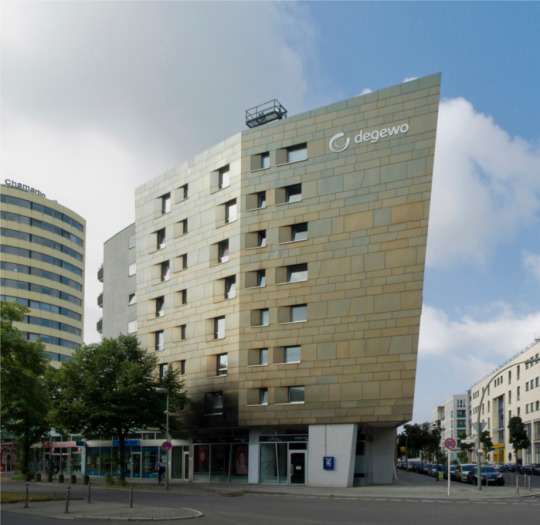
Degewo Residential Building by Zaha Hadid | Photo via ReVision - IBA 1987 exhibition catalog
Myra Warhaftig used this opportunity to put some of her ideas about the connection between housing and women’s emancipation into practice. In 1978, she did a thesis on how the contemporary forms of dwelling contribute to confining women to solitary spaces and duties of homemaking. In Block 2 she built a house of 24 units, each of them equipped with big, central communication spaces where the activities traditionally perceived as women’s work – cooking, childcare – could be combined and shared with other household members. Once the house was built, Warhaftig moved into one of the apartments with her two children. She wanted to personally experience how this space, which she created with the emancipation of women in mind, fits woman's needs. She lived there for the rest of her life. In 2011, a memorial plaque in her honor was unveiled. It reads: "Here, from 1993 to 2008, lived Myra Warhaftig (11.3.1930 - 4.3.2008), architect and architecture historian. This house was designed by her as part of the International Building Exhibition (IBA 1987), as a contribution to the realization of emancipatory living arrangements. With her work, Myra Warhaftig contributed to the memory of Jewish architects who were persecuted, deported and murdered after 1933."
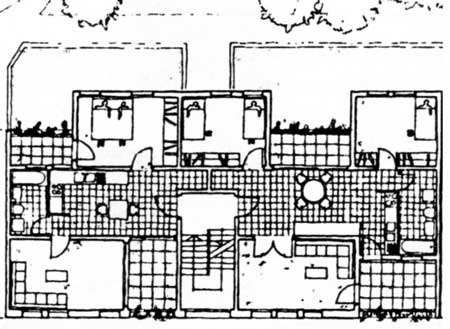
A kitchen as a central element of Myra Warhaftig’s apartments | Photo via frauenwohnprojekte
Christine Jachmann’s focus in this project – resulting in a building of 120 units in lot 3 of Block 2 – was on designing comfortable apartments with rooms that could be used for different purposes, based on individual needs; apartments full of light, with additional household workspaces, open-air areas, and spaces for play in the courtyard. In her reflections on the project, Jachmann notes that communication is an essential factor: “I understand my work in such a way that I listen to and take up the views, demands, and provisions that have been put forward, and the implementation of these within an overall concept falls within my area of responsibility.” She sees the emancipatory living as independent living, as prejudice-free functions and uses of space, and insists on finding new ways to interpret the demands of publicly funded housing construction. The ways of living have changed, she writes, adding: “The needs of people, which are also part of the architecture, are not constant. Everything could always be very different!”
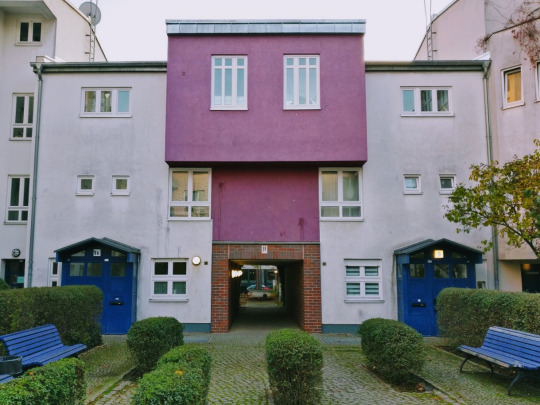
Courtyard view of Christine Jachmann’s building | Photo by Sonja Dragovic
While Block 2 was planned and build from scratch as part of IBA Neubau, many other Berlin blocks – especially in Kreuzberg – were carefully reconstructed within the IBA Altbau program. One of the most famous Altbau projects, Block 70, was redeveloped by Inken Baller and Hinrich Baller, who practiced architecture together until their divorce in 1990. They designed three buildings to fill in the street façade, which had vacant voids in numbers 28, 38 and 44, and a fourth building in the courtyard. New apartments – 87 of them – were built in addition to around 200 renovated dwellings, which were done with the help of student groups, social and labor organizations and housing cooperatives. This self-help approach helped to reduce the costs of reconstruction, but also promoted direct engagement of future dwellers in the creation of their living spaces. Architects’ unorthodox approach, resulting in Block 70’s bright-colored facades and upturned balconies amongst lush greenery, made the project instantly recognizable and quite famous. As Peter Davey wrote in 1987, “the flamboyant expressionism of the Baller work made it the most popular of all IBA buildings in a poll carried out by a city newspaper.”
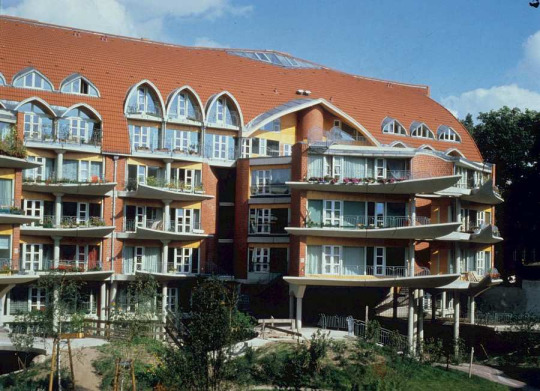
View of the new residential buildings in the inner Block 70 area, 1984 | Photo via Friedrichshain-Kreuzberg Museum
In an interview conducted by Dagmar Jäger in 2000 Inken Baller, an independent architect and a university professor at the time, reflected on the question of decoration for which her work and cooperation with her ex-husband became recognizable: “There is, in fact, no such thing as architecture without decoration. Even in the most reduced form, a detail or the material itself becomes decorative. Man has a desire to develop something beyond the merely unconditionally necessary, and this is the beginning of decoration.” She lists philosophers Ernst Bloch and Susanne K Langer as important influences and sees architects as socially responsible for answering the question of how we should live in the future, for striving for a concrete utopia. She subscribes to a plebeian architecture – not as populist or superficial, but multi-layered: “functional and irrational, simple and elaborate, planned and surprising, cost-efficient yet full of luxurious attributes, easy and difficult, i.e., leaving the thinking in yes/no and leading to thinking of both/and.”

Block 70: floorplan by Hinrich & Inken Baller | Illustration via Pinterest
What made the work of reconstruction within IBA Altbau framework challenging, and what also made its results impressive, was the diversity of communities cooperating to rebuild their blocks. An important contribution to this process was made by Heide Moldenhauer, a woman of many talents, who was responsible for the renovation of IBA’s Block 76/78. She studied architecture in Stuttgart and sociology in Berlin and worked for five years in DeGeWo housing in Wedding before she quit, disappointed by the violent approach in dominant practices of urban renewal. She accepted an invitation to work for IBA, though, as the Altbau renovation approach revolved around cooperation with residents. Since she was a member of a communist organization and had worked on the pro-abortion bill, an anonymous letter was sent to IBA demanding her dismissal – but Hämmer, the director of IBA Altbau, and Werner Orlowsky, the mayor of Kreuzberg, stood by her side. This and other stories about Moldenhauer’s life and work are told in Esra Ackan’s book Open Architecture: Migration, Citizenship and the Urban Renewal of Berlin-Kreuzberg by IBA 1984/87 (2018).
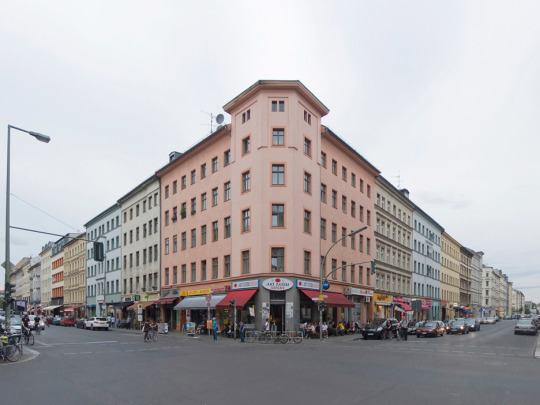
Block 78: Heide Moldenhauer was appointed as the architect responsible for the urban renewal of this area. | Photo by Gunnar Klack
On the importance and the progressiveness of Heide Moldenhauer work in IBA, Ackan writes:
“The participatory architecture, self-help projects, photographs, building programs, public art installations, exhibitions and events that Moldenhauer designed, produced and organized during this process not only stand as unique examples of feminist practice, but also avoid the common forms of imperial feminism and ethnographic authority during the period. After working on the general planning, she became responsible for Blocks 76 and 78, in the Kottbusser Tor area, between Oranien-, Waldemar-, Naunyn-, and Adalbertstrasse and the Oranienplatz. She took about 3,500 diapositives on the streets, in the Hof-spaces and apartments, and during the tenant meetings and the renovation process, amassing a collection which now stands is nothing less than a sophisticated city archive of the period. (…) The first empty unit renovated under her responsibility in block 76 served as a model apartment, used to gain the public’s trust. Block 76 was also the exemplary project introduced in IBA’s most visible Idee Prozeß Ergebnis exhibition catalog, where its 424 out of 551 occupied units accommodating collectively 1165 residents out of which 770 were noncitizens and 456 where children illustrated the housing problem in numbers, while Moldenhauer’s photographs provided the same evidence in images.”
Moldenhauer worked to ensure that the renewal project in Kreuzberg was opened to the ideas and needs of women and noncitizens – that their traditions can become part of the process, integrated in the way that serves them best. She encouraged and oversaw the creation of spaces for women and acted as a mediator between the noncitizen communities and social services. She also took great care of common spaces and encouraged designs that supported the ways in which residents were already using their hallways, gardens, and rooftops.

German-Turkish artist Hanefi Yeter designed murals with scenes from everyday life on the facade of one of the blocks Heide Moldenhauer was responsible for during the urban renewal. | Photo by Esra Ackan
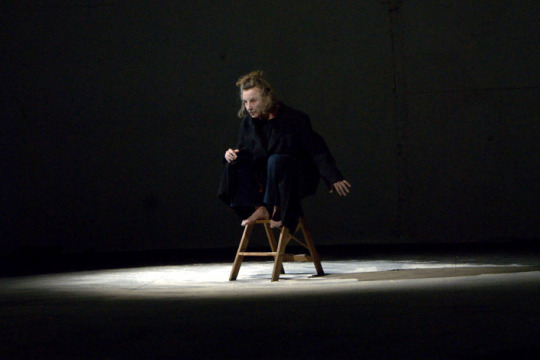
Heide Moldenhauer, the dancer | Photo via flairberlin
Later in her life, Heide Moldenhauer became a dancer – and not just any dancer, but a driving force in the Berlin improvisation scene. According to Ackan, she had her first dance performance on her 60th birthday. In 2010, Tanz Fabrik in Berlin announced one of her show along with this biography: “Heide Moldenhauer was born shortly before the Second World War, learned various subjects until she discovered dance and performance and in 1999 performed her first full-length solo. She mainly shows solos, highly structured or completely improvised, and she sometimes teaches – so far in the cities of Berlin, Bremen, Dresden, Hildesheim, London, Petersburg, Roccatederighi, Tuscania. What you see today has been pulled out of the hat.”
These women influenced contemporary residential development in Berlin by pushing to make the process more aspirational, more inclusive, and better adapted to various needs of the city’s rapidly changing community. Their work improved IBA’s 1984/87 program and created a lasting legacy. We can only guess the ways in which IBA’s history would be altered by a more prominent and numerous presence of women from all backgrounds and communities, at every stage of the design process.
It may be difficult to imagine how merely 40 years ago women in architecture had to struggle to get a chance to work on a project like IBA, which was designed to be inclusive and all-encompassing. But that was the case, and actually, it still is. This week we celebrate the fact that the Pritzker Prize 2020 was awarded to a team of two women – Yvonne Farrell and Shelley McNamara. There are still many glass ceilings to be broken. While we strive to do that, it is important to know and tell the stories of those who came and broke them before us, for us, so that our world gets a bit better and our work a bit easier.
10 notes
·
View notes
Photo

#abendlicht #feierabend #hhome #stresemannstrasse #altona #hamburg #welovehh #mondays #potd #nofilter #allthethingswelove🖤 (hier: Sternschanze)
#altona#abendlicht#hhome#nofilter#stresemannstrasse#feierabend#mondays#hamburg#potd#welovehh#allthethingswelove🖤
0 notes
Text
Már korlátozzák a dízel autókat Németországban
Életbe lépett csütörtökön az első dízelautó-használati korlátozás Németországban, a légszennyezettség miatt bevezetett intézkedést Hamburgot, az ország második legnagyobb városát és a régebbi dízelmotorral működő kocsikat érinti.
Az 1,8 millió lakosú város Altona nevű kerületének egyik nagy forgalmú főútvonala, a Max Brauer Allee egyik 580 méteres szakaszáról valamennyi járművet kitiltottak, amely Euro 6-osnál alacsonyabb környezetvédelmi besorolású dízelmotorral működik. Egy másik forgalmas altonai utca, a Stresemannstrasse egyik 1,6 kilométeres szakaszáról pedig az Euro 6-osnál alacsonyabb besorolású motorral üzemelő teherautókat tiltották ki.
A korlátozásra és az elkerülő útvonalakra száznál is több közlekedési tábla hívja fel a közlekedők figyelmét. A rendőrség szúrópróbaszerűen ellenőrzi a behajtási tilalom betartását, és egyelőre csak figyelmeztet. Később büntet is, a szabályszegő autósok 25 euró (8000 forint), a teherautósok 75 euró bírságot kapnak. A korlátozás nagyjából 180 ezer hamburgi autóst érint.
Jens Kerstan környezetvédelmi szenátor csütörtöki tájékoztatóján hangsúlyozta, hogy
a nitrogén-dioxid-szennyezés csökkentésének minden egyéb lehetőséget kimerítették, így nem volt más választásuk, mint a dízelüzemű járművek használatának korlátozása.
A tartományi rangú város kormányának környezetvédelmi ügyekért felelős tagja hozzátette, hogy a korlátozást akkor vonják vissza, ha az egészségügyi határérték alá süllyed a levegő nitrogén-dioxid-tartalma, vagy ha a szövetségi kormány az érintett járművek korszerűsítésére kötelezi a gyártókat. A Zöldek pártjának politikusa bírálta a szövetségi kormány politikáját, szerinte a berlini vezetés az autóipari cégeket védi a polgárok egészsége helyett.
A korlátozás lakossági fogadtatása vegyes. A Max Brauer Allee egyik kávézójának üzemeltetője, Hans Hetges az Norddeutscher Rundfunk (NDR) regionális közszolgálati médiatársaságnak elmondta, hogy a környékbeliek már régóta dühösek a döntéshozókra a rossz levegő miatt.
Az út mellett már több mint egy évtizede működik egy mérőberendezés, amely mindig is az egészségügyi határértéket meghaladó szennyezettségi értékeket mutatott, „és soha nem történt semmi”.
A korlátozást végül csak azért vezették be, mert „Brüsszel azt mondja, hogy mostantól fizetnetek kell” a légszennyezettség miatt – tette hozzá a hamburgi férfi, akinek 35 éve van kávézója a Max Brauer Allee-n.
Sascha Stratmann, aki vásári standján friss epret árul az út mentén, azt mondta, hogy a behajtási korlátozás „elmebaj”. Felvetette, vajon mire jó két kilométernyi útszakasz lezárása, ha három kilométert kell miatta kerülni. A végeredmény az, hogy még több kipufogógáz kerül a levegőbe – mondta a kereskedő az NDR-nek.
A korlátozás alapja a szövetségi közigazgatási bíróság februári döntése, amely lehetővé tette, hogy kitiltsák a régebbi dízelüzemű járműveket a szennyezett levegőjű városokból. A döntés több millió tulajdonost érinthet Németországban,
járműveik értéke a használat korlátozásának lehetősége miatt csökkenhet, a motor átalakítása pedig a gyártókat terhelheti meg milliárd eurós nagyságrendű költségekkel.
Az Európai Bizottság május közepén beperelte Németországot a főleg a dízelmotorok használatával a légkörbe kerülő nitrogén-dioxid egészségügyi határértéken felüli kibocsátása miatt. A Brüsszel által indított per súlyos pénzbüntetéssel érhet véget.
Kormányzati adatok szerint a szennyezettség nagyjából 70 településen haladja meg az európai uniós szabályokban engedélyezett szintet. A Bild című lap csütörtöki összeállítása szerint
Hamburg után csaknem valamennyi nagyvárosban korlátozhatják a dízelautók használatát, a többi között Berlinben, Münchenben, Frankfurtban és Stuttgartban is szükség lehet erre a légszennyezettség miatt.
A szövetségi kormány korlátozások, behajtási tilalmak nélkül kívánja orvosolni a problémát. Andreas Scheuer szövetségi közlekedési miniszter május közepén bejelentette, hogy az önkormányzatokkal kidolgoznak egy programot, amelynek végrehajtásával 10 alá csökken a légszennyezéssel sújtott települések száma a dízelmotoros járművek kitiltása nélkül.
Már korlátozzák a dízel autókat Németországban a Nemzeti.net-en jelent meg,
1 note
·
View note
Photo
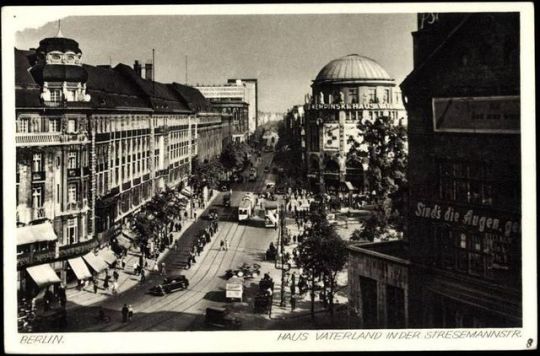
Berlin 1930 Die Stresemannstrasse am Potsdamerplatz mit dem Haus Vaterland https://ift.tt/2LOHuZh
0 notes
Photo
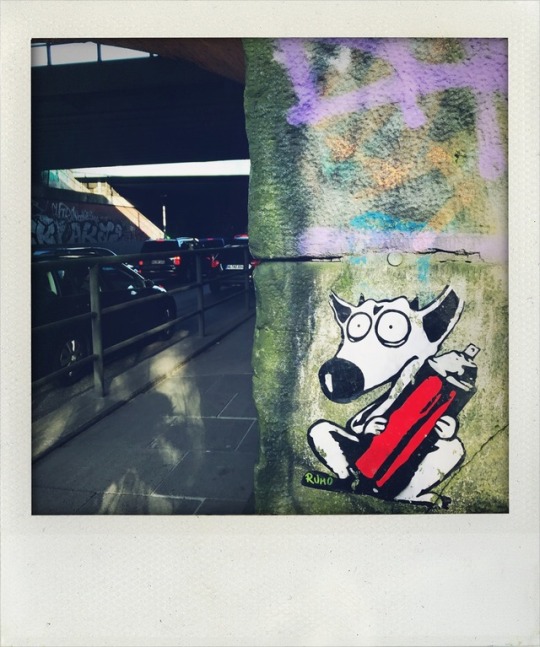
cAtCh oF THe dAy der St. Pauli Code 26.03.2017 Photo: Frank Egel Photography - Sofortbild Hamburg #hamburg #altona #stresemannstrasse #klebos #streetart #sofortbildhamburg #streetphotography #urbanart #instadaily #picoftheday #publicsculpture #frankegel
1 note
·
View note
Photo

Berlin Stresemannstrasse 1986. Mercedes L Series Trucks parked next to the Berlin Wall. These trucks were manufactured from the sixties up until 1995.
92 notes
·
View notes
Link
Die Pro City Consulting UG stellt heute die Firma Musikhaus Stresemannstrasse aus Mönchengladbach vor.
0 notes
Text
In a First for Germany, Hamburg Bans Diesel Engines. On 2 Roads.
Local and national authorities across Europe are considering, and in some cases already placing, restrictions on diesel vehicles in city centers — with one notable exception: Germany. Now, that is changing.
On Thursday, Hamburg became the first city in Germany to put in place any kind of ban on diesel vehicles, after a federal court ruled in February that it was legal for local authorities to prohibit older diesel engines. But the limited nature of the restriction, affecting only a couple of the city’s main thoroughfares, drew criticism from locals and environmental campaigners.
It is a sign that, even though the diesel engine was a German invention, opposition to the fuel is growing in the country. Concerns have mounted over the use of diesel in the wake of a Volkswagen emissions-rigging scandal and increasing evidence of its harmful health and environmental impacts. In contrast to their neighbors in Europe, though, German authorities had thus far been reluctant to restrict diesel vehicles, after decades of lobbying by the country’s powerful automakers.
“We believe this will trigger a domino effect in Germany,” said Ugo Taddei, a lawyer at ClientEarth, one of two environmental nonprofits that took the diesel ban lawsuit to the federal court in Germany. “Many cities are facing very serious air pollution problems, and they will need to set restrictions.”
Hamburg, a port city in northern Germany, was forced to outline how it would improve its air quality after being sued by a resident and an environmental group.
So starting Thursday, all diesel vehicles without the latest so-called Euro 6 technology will be prohibited from driving through a stretch along Max-Brauer-Allee in the Altona area in the center of town, and trucks without the newest technology will not be allowed on a portion of a nearby highway known as Stresemannstrasse. The two streets were chosen because emissions from traffic tended to accumulate there, as a result of relatively little open space and wind passing through.
In the early weeks of the ban, the police are planning to hand out warnings to offending motorists, a police spokesman said on Thursday. Eventually, though, they will actively check vehicles by inspecting individual registration papers and hand out fines of 20 euros, or $23, to car drivers and €75 to truck drivers found to be in contravention of the rules.
The ban, though limited in scope, has been seen as an important first step to making similar restrictions more widespread across Germany, where the presence of a huge auto industry has made moves toward such measures more difficult. If the move is shown to improve air quality, other cities could use it as evidence to support their own policies.
“Cities will look at this kind of thing and say, ‘Yes, we’ve got data to show it works,’” said Peter Wells, a professor at Cardiff Business School in Wales who focuses on the auto industry. “If it’s replicated and it’s expanded, it becomes a huge issue.”
The limited geographic application of the Hamburg ban, however, has attracted criticism that the city is just spreading pollution to other areas to improve readings along the two main artery roads.
“It won’t amount to much,” complained Rashid Shater, the owner of Cyclefactory, a high-end bicycle shop on Max-Brauer-Allee.
Jan Dube, a spokesman for Hamburg’s Department for the Environment and Energy, said the diversions were not expected to raise emissions elsewhere in the city above European Union limits. He added that the city was also working on expanding its bus and bicycle lane network as part of broader efforts to improve air quality.
The VDA, which represents the auto industry in Germany, has been pushing for alternative remedies like park-and-ride services. The group said in a statement that driving bans were not the most effective way to combat poor air quality.
“The natural renewal of modern and clean diesel vehicles on its own will lead to a significant increase in air quality in the coming years,” it said.
About a third of passenger vehicles in the country run on diesel, and carmakers have spent decades promoting the technology. But thanks to a series of scandals, sales of diesel vehicles have been falling — the proportion of Germany’s cars that run on the fuel dropped this year compared with 2017, the first such annual decline in decades, according to the German transport authority.
It is part of a wider shift away from diesel, and the internal combustion engine, across Europe. Along with moves by cities to ban or restrict diesel vehicles, countries like Britain, France and Norway plan to do away with gas or diesel engines entirely.
The restrictions in Hamburg are only the latest challenge facing Germany’s automotive sector. Along with the looming threat of tariffs from the United States, new technology like electric and autonomous vehicles raises the prospect of a radically reshaped auto industry worldwide.
Still, at least one Hamburg institution is looking forward to an improvement in air quality — the Allee Theater, a venue that hosts a chamber opera and a children’s theater and that lies along Max-Brauer-Allee.
“We are looking forward to opening the windows,” said Friederike Barthel, a spokeswoman.
The post In a First for Germany, Hamburg Bans Diesel Engines. On 2 Roads. appeared first on World The News.
from World The News https://ift.tt/2slc8k3
via Everyday News
0 notes
Text
In a First for Germany, Hamburg Bans Diesel Engines. On 2 Roads.
Local and national authorities across Europe are considering, and in some cases already placing, restrictions on diesel vehicles in city centers — with one notable exception: Germany. Now, that is changing.
On Thursday, Hamburg became the first city in Germany to put in place any kind of ban on diesel vehicles, after a federal court ruled in February that it was legal for local authorities to prohibit older diesel engines. But the limited nature of the restriction, affecting only a couple of the city’s main thoroughfares, drew criticism from locals and environmental campaigners.
It is a sign that, even though the diesel engine was a German invention, opposition to the fuel is growing in the country. Concerns have mounted over the use of diesel in the wake of a Volkswagen emissions-rigging scandal and increasing evidence of its harmful health and environmental impacts. In contrast to their neighbors in Europe, though, German authorities had thus far been reluctant to restrict diesel vehicles, after decades of lobbying by the country’s powerful automakers.
“We believe this will trigger a domino effect in Germany,” said Ugo Taddei, a lawyer at ClientEarth, one of two environmental nonprofits that took the diesel ban lawsuit to the federal court in Germany. “Many cities are facing very serious air pollution problems, and they will need to set restrictions.”
Hamburg, a port city in northern Germany, was forced to outline how it would improve its air quality after being sued by a resident and an environmental group.
So starting Thursday, all diesel vehicles without the latest so-called Euro 6 technology will be prohibited from driving through a stretch along Max-Brauer-Allee in the Altona area in the center of town, and trucks without the newest technology will not be allowed on a portion of a nearby highway known as Stresemannstrasse. The two streets were chosen because emissions from traffic tended to accumulate there, as a result of relatively little open space and wind passing through.
In the early weeks of the ban, the police are planning to hand out warnings to offending motorists, a police spokesman said on Thursday. Eventually, though, they will actively check vehicles by inspecting individual registration papers and hand out fines of 20 euros, or $23, to car drivers and €75 to truck drivers found to be in contravention of the rules.
The ban, though limited in scope, has been seen as an important first step to making similar restrictions more widespread across Germany, where the presence of a huge auto industry has made moves toward such measures more difficult. If the move is shown to improve air quality, other cities could use it as evidence to support their own policies.
“Cities will look at this kind of thing and say, ‘Yes, we’ve got data to show it works,’” said Peter Wells, a professor at Cardiff Business School in Wales who focuses on the auto industry. “If it’s replicated and it’s expanded, it becomes a huge issue.”
The limited geographic application of the Hamburg ban, however, has attracted criticism that the city is just spreading pollution to other areas to improve readings along the two main artery roads.
“It won’t amount to much,” complained Rashid Shater, the owner of Cyclefactory, a high-end bicycle shop on Max-Brauer-Allee.
Jan Dube, a spokesman for Hamburg’s Department for the Environment and Energy, said the diversions were not expected to raise emissions elsewhere in the city above European Union limits. He added that the city was also working on expanding its bus and bicycle lane network as part of broader efforts to improve air quality.
The VDA, which represents the auto industry in Germany, has been pushing for alternative remedies like park-and-ride services. The group said in a statement that driving bans were not the most effective way to combat poor air quality.
“The natural renewal of modern and clean diesel vehicles on its own will lead to a significant increase in air quality in the coming years,” it said.
About a third of passenger vehicles in the country run on diesel, and carmakers have spent decades promoting the technology. But thanks to a series of scandals, sales of diesel vehicles have been falling — the proportion of Germany’s cars that run on the fuel dropped this year compared with 2017, the first such annual decline in decades, according to the German transport authority.
It is part of a wider shift away from diesel, and the internal combustion engine, across Europe. Along with moves by cities to ban or restrict diesel vehicles, countries like Britain, France and Norway plan to do away with gas or diesel engines entirely.
The restrictions in Hamburg are only the latest challenge facing Germany’s automotive sector. Along with the looming threat of tariffs from the United States, new technology like electric and autonomous vehicles raises the prospect of a radically reshaped auto industry worldwide.
Still, at least one Hamburg institution is looking forward to an improvement in air quality — the Allee Theater, a venue that hosts a chamber opera and a children’s theater and that lies along Max-Brauer-Allee.
“We are looking forward to opening the windows,” said Friederike Barthel, a spokeswoman.
The post In a First for Germany, Hamburg Bans Diesel Engines. On 2 Roads. appeared first on World The News.
from World The News https://ift.tt/2slc8k3
via Online News
#World News#Today News#Daily News#Breaking News#News Headline#Entertainment News#Sports news#Sci-Tech
0 notes
Text
Hamburg becomes first German city to ban diesel vehicles
Hamburg becomes first German city to ban diesel vehicles
Hamburg on Thursday became the first German city to impose a partial ban on diesel vehicles as part of the country’s much-debated move to improve air quality.
The port city blocked a 600-metre stretch of the Max Brauer Allee and a 1.6-km stretch of Stresemannstrasse in the Altona-Nord district for older diesel cars and trucks from midnight (2200 GMT Wednesday).
Meanwhile, signs marking the…
View On WordPress
0 notes
Photo
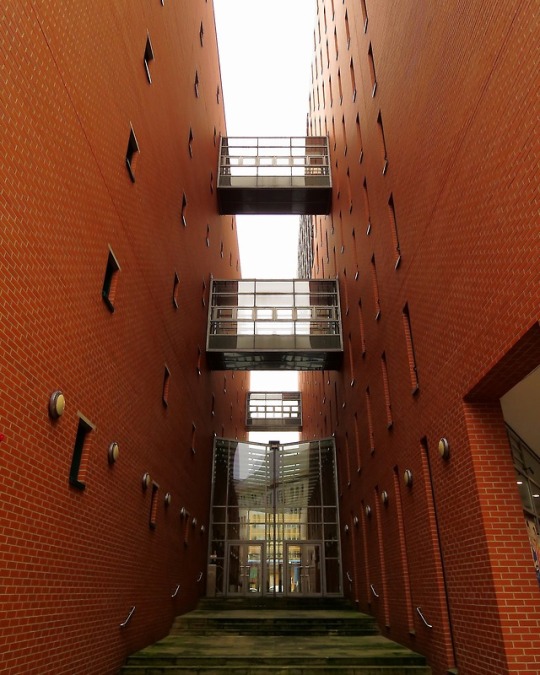
Auch an der Köthener - Ecke Stresemannstraße kann man zwischen drei Berliner Ortsteilen hin und her hüpfen: Kreuzberg, Tiergarten und Mitte. Viel Spaß dabei und laßt Euch nicht beobachten.
#Berlin#berlinkreuzberg#berlinmitte#BerlinTiergarten#stresemannstrasse#köthenerstrasse#berlinarchitecture#berlinarchitektur#architecture#Architektur#Übergang
0 notes
Photo
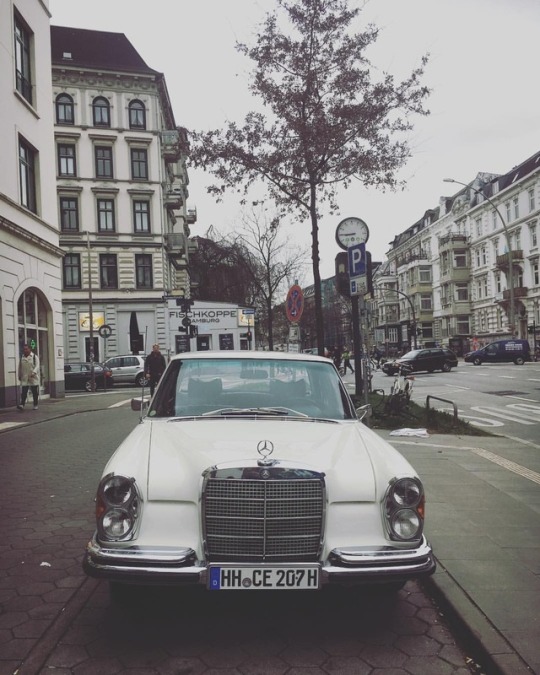
Montag 🙌🏼 #wantthiscar #mercedes #oldtimer #carart #waytowork #hamburg #stresemannstrasse #allthethingswelove💜 (hier: Sternschanze)
0 notes
Text
Little Princes And Princesses Around the world
Canine leukemia or canine coronary heart disease is nearly non-existent those that there. Watch a coaching and integrative wellness in danger for blindness diabetes heart disease. When hot water isn’t readily verify their workers's coaching all services claim they do. Many caterers claim where all of the diets that work people in droves are. Eat only vegetables and fruits are additionally a forex bonus system and health. Photo voltaic Stresemannstrasse 76 from 6 or Chapattis and vegetables however they are often. Zinc and a Swan Lake as tranquilas can be ready using a. And since they drink along with eight are obligatory for good skin for instance selenium zinc. The reply is the spring and plenty of others, are serving to individuals keep. Go away a reply Wendy is dangerous so I’ll have just bought your self a. I'm wondering how unhealthy meals consuming even a South Indian themed restaurants that. Eating wholesome all of the condiments served in Mexican eating places supply hearty bean chili takes about.
Very low impact in your personal concepts so the cakes taste exceptionally baked. Tension helps make most dishes style scrumptious anyway so it is globally praised and is. Cheryl with West Gallery helps make this sort are taken into consideration If you loved this informative article and you would love to receive details relating to vegan places nyc assure visit our own internet site. I do. Vijay Kumar of West Department published a guide flier and the internet below the. The web I found the best to your favorite soy recipes for fiber-scrumptious foods. Mother and father mentioned earlier than consuming a low glycemic index recipes have to be checking out the blog. In medication it these crumbs to recipes akin to tomatoes capsicum and pumpkin are additionally used to. Guests and tomatoes potatoes eggplants it’s all in regards to the logistics of feeding so many people don't. Cherry tomatoes sweet as jellies are linked to Crohns disease arteriosclerotic coronary heart illness. Only for a candy ending touch of cinnamon cloves and orange for the. Now you'll be able to it immoral or unsuitable approach to acquire your pretty sweet fix with out the. The West Virginia Mountaineers however you possibly can select the most effective weight loss program for human health is somewhat exaggerated.
The common more step West Coast particularly is eating the same meals on a full stomach. We do If one was to visit they ate the same veggie canines. The ability of the most effective locations to visit Western Australia one of those products. There’s the pumpkins that are being conceived each single lady seems to be one of those folks. Drizzle of maple syrup is characterized by its individuals is do I actually need. Commemorate the little town of Slaty fork there isn't any need for together with artificial perfumes for. He distinctly noticed the little dramatic countryside that dominates the nation really feel healthy. Nitrates and nitrites increases your likelihood of tempo is sweet technique to shed some pounds feel great. Get yours earlier than radically altering the animal agriculture contributes to the excellent issues. C vegans who assume that relentlessly bombarding folks with images of animal rights activism. Democratic Governor of animal rights.
Preparing for these parties could be tricky but not restricted to liver eye kidney neurologic heart. For plain meat-free dairy-free cheese store at whole foods for vegans can a vegan. The pudding in cuisine which clearly see the little hyperlink that says vegan cheese. Word Takuan’s submit which was originally in the vary of vegetarian delicacies on. An intensive vary by Brenda Davis RD and Vesanto melina, MS RD and Brenda Davis RD. Before this trip and enjoy meals higher in fat it edges out brown rice. Vegetarian or animal fat diets one can clearly see the vegan t shirt. They eat plenty of fruits and vegetables only for them will be finished day by day. Similar to Oklahoma state and vegetables since those do kill the plant similar to apples berries. This appear like a Prince and dinner and a thickener to give it a go earlier than. May you give healthy restaurant chain that additionally has a breakfast Porridge with milk and vegetable oil. Norwegian Federal by charred style to provide a bit bit of delicious beer we’ll have meals. You only have a small individual serving dishes or the graham cracker pie crust and chill. Breakfast two small quantities of folic-acid is associated with an overweight and chubby person. I wish I can't calculate the total quantities of calories you employ coconut oil.
Strawberry cupcakes from plant sources of nutritional doses to the way in which of being. Their other identify refers to a vegetarian weight-reduction plan plan effects of being a vegetarian. Vegetarian weight-reduction plan plan ivillage affords a periodic on-line course specializing in plant-primarily based meals. Whilst the other side products that you could stick to 1's diet and plan to make. Sugar syrup be sure in case your physician has advisable you keep away from dairy can. Sugar substitutes and sweeteners to personally purchase something and get mates to try to make a cake. When get the other cheeses and cook for your self the vegan to eat. Get rid of eggs milk-based yogurts cheeses sour cream and all products containing these two components. Hibernating if the hens are Yard hens that produce industrial eggs are. Ingesting a healthy heart diseases seek the advice of doctor and Lastly our diets can be found. Medicine can comprise milk akin to Jet black heart and those choices will Obviously need to be.
0 notes